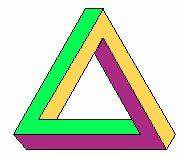Origin Of Life
Still stewing over life’s preference for left-handed amino acids
Craig Venter: Life is robotic software. Well then, information isn’t material.
Definition of life wars: Darwin’s house divided?
The “inversion concept” of the origin of life
ID Foundations, 15: Mignea’s “simplest” self-replicator, the vNSR and a designed origin of cell-based life
The recent Engineering and ID conference was obviously fruitful. I find it — HT: JohnnyB — helpful to compose Mignea’s schematic for self-replication, and discuss it a bit in the context of the origin of self-replicating entities given von Neumann’s requisites of a successful kinematic self-replicator. [Henceforth, vNSR.] Let me extract from the just updated discussion in the IOSE course, Unit 2: _________ >>John von Neumann’s self-replicator (1948 – 49) is a good focal case to study. Ralph Merkle gives a good motivating context: [[T]he costs involved in the exploration of the galaxy using self replicating probes would be almost exclusively the design and initial manufacturing costs. Subsequent manufacturing costs would then drop dramatically . . . . A device Read More ›
The Design of the Simplest Self-Replicator
The first video from the Engineering and Metaphysics conference is from Arminius Mignea. His talk is about self-replication, and what is really required for self-replication to occur. Mignea reviews current attempts at self-replication, and shows the minimal structures needed for it to occur. The slides for the talk are available here. Enjoy!
The cat dragged my origin of life theory away … No wait, my kid pulped it into a birthday pinata.
Winners of Harry Lonsdale’s $50,000 Origin of Life Challenge announced
Earth’s early atmosphere impossible to recreate?
Remember the arsenic eating bacteria? Paper in Science refutes claim
On the Impossibility of Abiogenesis
 Modern science takes for granted that the naturalistic origin of life, called “abiogenesis” or “chemical evolution” or “pre-biotic evolution” is extremely improbable but not impossible. “Life” here means a single self-reproducing and self-sustaining biological cell. Science claims that life can arise from inorganic matter through natural processes. This unsupported claim is based on the conviction that all arrangements of atoms are possible and life is considered merely one such arrangement. In what follows I try to explain that such a believe is unfounded because abiogenesis is impossible in principle. My argument, expressed in its simplest form, has two main steps: (1) to show that a computer cannot be generated naturalistically; (2) to show that biological systems contain computers. From #1 and #2 I will argue the impossibility of abiogenesis. Read More ›
Modern science takes for granted that the naturalistic origin of life, called “abiogenesis” or “chemical evolution” or “pre-biotic evolution” is extremely improbable but not impossible. “Life” here means a single self-reproducing and self-sustaining biological cell. Science claims that life can arise from inorganic matter through natural processes. This unsupported claim is based on the conviction that all arrangements of atoms are possible and life is considered merely one such arrangement. In what follows I try to explain that such a believe is unfounded because abiogenesis is impossible in principle. My argument, expressed in its simplest form, has two main steps: (1) to show that a computer cannot be generated naturalistically; (2) to show that biological systems contain computers. From #1 and #2 I will argue the impossibility of abiogenesis. Read More ›